An Introduction to Strategic Planning
Strategic planning is the process of documenting and establishing a direction of your small business—by assessing both where you are and where you’re going. The strategic plan gives you a place to record your mission, vision, and values, as well as your long-term goals and the action plans you’ll use to reach them. A well-written strategic plan can play a pivotal role in your small business’s growth and success because it tells you and your employees how best to respond to opportunities and challenges.https://www.youtube.com/embed/7PaJnEacQvQ?version=3&rel=1&fs=1&autohide=2&showsearch=0&showinfo=1&iv_load_policy=1&wmode=transparent
Despite the benefits of having a strategic plan in place, a growing number of small business owners aren’t focusing on the long-term strategies of their businesses. In a 2018 Constant Contact survey of 1,005 small business owners, 63% said they plan only a year (or less) in advance.

If you’re one of these small business owners, it’s not too late to think differently. Your future success depends on effective strategic planning. It’s a process of looking ahead that should involve your entire business, and the discussions can lead to meaningful changes in your business. Strategic planning consists of analyzing the business and setting realistic goals and objectives. This leads to the creation of a formal document that lays out the company’s views and goals for the future.
Benefits of Strategic Planning
The strategic planning process can take some time, but it’s beneficial for everyone involved. As the small business owner, you’ll have a better idea of the goals and objectives you want to accomplish and a path to do that. For your employees, the process can foster an increase in productivity—contributing to the success of the business.
Communicating Your Strategic Plan
The strategic planning process should involve your employees. Your employees are involved in the day-to-day operations and can provide you with a unique view of the company. Employees can share with you what they think is and isn’t working with the business today, which can inform your planning for the future.
In addition to your employees, it’s beneficial to reach out to people outside of your company to get their opinions. Like your employees, vendors have a unique perspective on your industry. Talk to them about the business, and get their thoughts on how they think the business landscape can change in the future.
The U.S. Small Business Administration recommends that the strategic planning process be a flexible one. When you meet with your employees and any people outside of the company, remember that the discussions should encourage new ideas and thoughts.

Increase Productivity
Involving your employees in the strategic planning process also means they receive a sense of accountability that can increase productivity. Whether they contributed in the process or were informed of the business’s goals and objectives after the strategic plan was created, they’ll be more likely to want to help you achieve those targets.

Identifying Strengths and Weaknesses
As part of the strategic planning process, you’ll examine and analyze your entire business. You’ll take a look at what your business does well and the areas where it still needs to improve. By identifying your business’s current strengths and weaknesses, the process gives you and your employees an opportunity to improve in the future and become a durable business by minimizing risks.
Although you may have a good idea about what your business excels at and areas that need to be improved upon, don’t forget to involve your employees. They may tell you something you didn’t think of.

Setting the Direction of the Business and Fostering a Proactive Business
By the end of the strategic planning process, you and your employees should have a clear direction of where you want the business to go in the future. These discussions and the planning process itself help put the business in the best position to succeed in the future.
Strategic planning gives you and your business time to figure out how to grow over the next few years and how to address new opportunities and challenges. Think about the challenges or issues your business may face in four or five years and plan accordingly, so your business doesn’t stumble down the road.
Strategic Planning Misconceptions
There are many strategic planning misconceptions. From not having enough time or thinking it only benefits larger businesses, to fearing you’ll put your business on the wrong path, there are a variety of reasons why business owners may be wary of strategic planning. But don’t be alarmed; strategic planning can help your business—big or small—and the benefits far outweigh any perceived negatives.
Regardless of the size of your business, a strategic plan is beneficial. Whether you are a small business or a large corporation with hundreds or thousands of employees, strategic planning helps you make sure the company is headed in the right direction.
But how do you know if you’re steering the company in the right direction? The beginning phases of strategic planning focus on research and discussions. The decisions you make during strategic planning aren’t based on assumptions; they’re based on research and information you’ve gathered while talking with your employees and people outside of your company.
The strategic planning process may seem daunting at first, but when you understand what’s involved and how to do it, it’s not that complicated. It takes time, but the amount you invest in the process pays off when everyone in your company works toward accomplishing the goals and objectives you’ve laid out.
The process doesn’t stymie creativity either. When you meet with your employees for strategic planning, you’re asking everyone to have a discussion and brainstorm ideas. The strategic planning process puts everyone’s minds together to think of creative ideas.
If you go through the strategic planning process once, don’t think you won’t have to do it again. The strategic plan is a living document; it should change over time. It’s not uncommon for business owners to create a strategic plan with their employees and rarely—or never—revisit the document. Reviewing and evaluating your strategic plan regularly will help keep you accountable and on track to achieve your goals and objectives.https://www.youtube.com/embed/tL2ovIHqM0U
What Makes Strategic Planning Successful?
Successful strategic planning involves a team effort among you and your employees, as well as among you and your vendors and other outside people. The more you engage your employees with strategic planning, the better they’ll understand the strategy you want to have for your business.
Strategic planning also needs to be flexible. While it’s necessary to have goals and objectives for your business, you also have to be able to adapt to changes. It may take you longer than expected to achieve a particular goal; recognize that this isn’t an issue and that you can incorporate changes to your plan to put you in a better position to succeed.

When strategic planning is successful, everyone in your business is on the same page with the business’s direction and goals. Each individual understands what makes the business stronger and what needs to be worked on. And it’s more likely that each person wants to contribute to the business’s growth and success.
When Should Strategic Planning Be Done?
When it comes to strategic planning, you want to start it sooner rather than later. It doesn’t necessarily have to be done in the first few days or weeks of the company’s life—you may want to be in business for a few months to give yourself a better idea of what is and isn’t working.
But even if you’ve owned your business for a long time, it’s not too late to get started on strategic planning. It’s never a bad time to sit down and think about the current status of your company and where you want to be in the next five to 10 years. When you’re ready, gather your team together and schedule regular meetings dedicated to strategic planning.
Where Do Strategic Plans Go Wrong?
Strategic planning is an ongoing commitment. Even if you go through an initial round of strategic planning and it leads to the development of your business’s first strategic plan, it’s still not finished. The plan has to be implemented.
Strategic plans also can go wrong if the goals and objectives you set are unrealistic. Every business owner wants to see their business grow and succeed, but if you set an overly ambitious growth rate, it could discourage you and your employees.
A successful strategic plan requires commitment. Your entire team needs to be focused on the business and carrying out the strategic plan. If the strategic plan isn’t being used regularly or as the foundation of the business, you and your employees can lose sight of the company’s direction and goals.
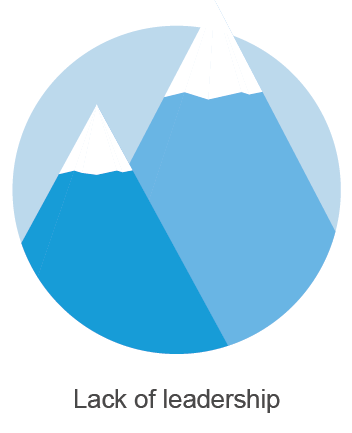
The top three reasons strategy implementation fails:
- Poor Communication
- Lack of Leadership
- Using wrong measures
Reviewing and Updating Your Strategic Plan
A strategic plan is a living document. Don’t spend the time to create a strategic plan and then put it on the shelf to collect dust. Live by it. And regularly update your strategic plan. How often you should update your strategic plan depends on how your business works.
If your business works in a fast-paced industry and can be affected by changing outside factors, you should review and update your strategic plan on a more frequent basis. For example, if your business operates within the ever-evolving tech industry, you will probably want to check on your strategic plan after each quarter.
At the very least, you should review your strategic plan every year. When you review your strategic plan, you’re looking at the assumptions made and checking to see where your business stands in relation to those assumptions. What you thought would be challenges and threats to your business a year ago may not be the same now. Don’t be afraid to change any part of the strategic plan. If outside factors are having a bigger impact on your business than you initially thought, you may have to change your objectives or goals.
The regular review is also a good opportunity to check back in with your employees. Your employees helped you create the business’s strategic plan and they’re as invested in the success of it as you are. Give them a summary of where the business currently stands. Talk with them to see if things have improved or if they still have concerns with the business—or if any of their initial concerns have changed.
After you review the strategic plan, share any changes with your team. Even if you didn’t make any changes, it’s a good opportunity to give the rest of your company your thoughts on the business’s status and confirm that things are on the right track. You also can encourage your employees to continue working hard to achieve the goals and objectives in the strategic plan.

The Strategic Planning Process
When it comes to the strategic planning process, think of it as having three phases: discussion, development, and review and updating. The goal of the strategic planning process is to ensure everyone in the business is aligned when it comes to your small business’s goals and objectives, as well as to create a formal strategic plan document.

Discussion Phase
The discussion phase is meant to gather as much information, opinions, and input as possible. Set up a regularly scheduled meeting with the employees and any other staff in your business who will be involved with strategic planning. Make sure you have an agenda and clear expectations of what you want to accomplish in each meeting. This will keep discussions on track and help prevent distractions. In the first few meetings, try to answer questions that will help you define the business’s current status, such as, “Where are we now?” and “Where are our competitors?” Once you have a good idea of where the business is, you can focus in on specific details in future meetings.
In addition to regular meetings with your employees at your business, you can also reach out to vendors, investors, analysts, and other people outside of your company to gather information. External people will have a unique perspective on not only your business, but also the industry you’re operating in. Getting their opinions on where they think the industry is going and what they think will change in the future can help you put together your strategic plan and determine where you want your business to be down the road.
You can also conduct a SWOT analysis. SWOT stands for Strengths, Weaknesses, Opportunities, and Threats. When you’re conducting a SWOT analysis, you and your employees will examine what your business does well, where it can improve, any future opportunities to pursue that could help facilitate growth and success, and any competitors or external factors that could prevent the business from succeeding.
Your strengths should be pretty easy to identify. When you’re discussing your business’s weaknesses, don’t be afraid to be candid. Every business has weaknesses and things to work on. Any weakness you and your employees note means it’s something you’ll aim to improve on in the future with a detailed initiative outlined in the strategic plan.
Opportunities available to your business may be pretty clear, while identifying threats to your business can be more difficult. Speaking with people outside of the company should give you a good idea of where the industry could be heading and if there are any major competitors or challenges coming. If you can identify a number of threats and challenges to your business early on, it puts you in a better position to address them if and when you encounter them down the road.

Development Phase
After you’ve collected all of the information, it’s time for the development phase. This is when you’ll start putting together your business’s strategic plan. A strategic plan consists of five key components: a vision statement, a mission statement, goals and objectives, an action plan, and details on how often the strategic plan will be reviewed and updated.
Decide with your employees what you will use to create the strategic plan. Are you going to purchase software to help you create and house the plan? Or are you going to create the plan yourself and save it in the cloud for easier access?
When you’re creating goals and objectives for your business, make sure they’re realistic and measurable. Work with your employees to create goals and objectives for at least the next one to three years. And discuss how these goals and objectives will be measured and tracked.
For example, if you have a goal of increasing sales by 10% in the next year, you can track this by measuring sale numbers. Equally important is having an action plan to achieve these goals and objectives. If you’re trying to increase your sales by 10% in a year, you can pursue more marketing and social media outreach as part of your action plan. If an action plan doesn’t help your business achieve its goals, the plan needs to be rewritten.

Review and Updating Phase
A critical part of the strategic plan should address how often it will be reviewed and updated. Designate someone to be responsible for reviewing, updating, and sharing any changes with the rest of the company. Whether it’s you or another employee, you’ll want to make sure everyone in the business is aware of the changes and how they affect the overall strategic plan.
The strategic plan is meant to be a fluid document; don’t fall into the trap of creating the document and letting it sit on a shelf for years. If you developed meaningful objectives and action plans, they should help with regularly checking the strategic plan. For example, if your action plan requires you to put in sales numbers every quarter to track revenue, you could take that time to review the rest of the plan.
You can also set an alert to check the strategic plan on a regular basis. Whether it’s every few months, every quarter, or every year, a recurring alert can help you review and update the document.
When you’re reviewing your strategic plan, you may find that you’re not on track to meet an objective or goal that you previously set up. Don’t panic. Reassess the situation and, if you need to, discuss the issues with your employees. Figure out what went wrong and why your business isn’t on pace; maybe the goal was too ambitious or not realistic. Change the goal or objective and update the action plan to help you get back on track.
You also may find that your small business has met a goal or objective earlier than you thought you would. If so, you can create a new goal or objective to work toward, or try to maintain the progress you’ve already made. Discuss the ideas with your employees to see what they think is possible.
Strategic Planning Template Checklist
A good strategic planning template is like a checklist. The template will include different sections for you to complete and help you cover a variety of topics. Using a thorough template will help ensure you have a comprehensive strategic plan for your business.
You can use computer software for your strategic planning template, or you can create your own with Microsoft Word or Excel. You can also download our Strategic Planning Template to use.

- At the top of your template, label it “Executive Summary” and provide an overview of your business. Include the time period you’re looking at for your business’s strategic plan; for example, if the strategic plan provides a three- to five-year outlook.
- Underneath this section would be information on “Your Company.” This is where you’ll put in your mission statement, vision, values, and information on leadership.
- A section on “Research” will include information on your clients and customers, competitors, and the industry.
- You can also create a section on “Products and Services,” which will detail any products you sell, pricing strategy, delivery systems and capabilities, and suppliers.
- A section of your template should focus on “Measurable Goals.” These should be realistic goals or objectives that you want your business to achieve within the time period you set. Don’t forget to include details on how the progress of each goal or objective will be measured.
- Whether you include it within the Measurable Goals section or as a stand-alone group in the template, don’t forget about your “Action Plans.” This provides an overview of how you and your employees are going to achieve your business goals and plans.
- You also can put your SWOT analysis into the template. List the identified strengths, weaknesses, opportunities, and threats with your business. Remember to be honest and candid. When you are reviewing your strategic plan in the future, you can reference the initial SWOT analysis and check to see what has changed.
- The last section should detail “Reviews and Updating.” Explain how often the plan should be checked (every few months, quarterly, annually, etc.). Provide a list of people who should be responsible for reviewing and updating the strategic plan, as well as communicating any changes with the broader business.

Strategic Planning Examples
Strategic plans can vary, depending on the type of business you operate or the industry you’re in. Here are a few examples of different strategic plans:
Strategic Plans for Business
A strategic plan for a business will include the company’s mission and vision statement, as well as its goals and objectives and the action plans to achieve them.
The strategic plan is different from a business plan. The business plan is typically used to help start the business and acquire the necessary funds to open the doors. A strategic plan outlines the strategy for growth and success in the future by using existing resources.
The Canadian Soccer Association’s strategic plan for 2014 to 2018 is full of information and details. It includes an examination of the organization’s current status and what the focus in the future will be. It includes the goals and objectives of the Canadian Soccer Association, as well as the strategies it’ll use to achieve them.
According to small business owners, their top challenges in 2017 were:
- 67% said lack of capital and/or cash flow
- 24% said effective time management
- 28% said effective marketing or advertising
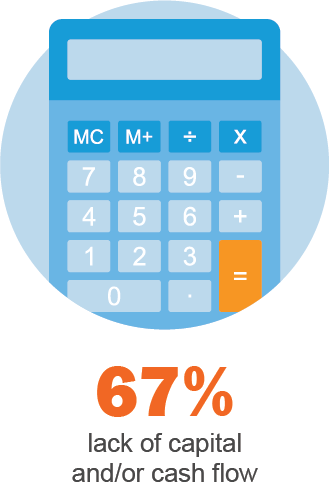
Strategic Plans for Nonprofits
A strategic plan for a nonprofit organization will include the same key components. A nonprofit strategic plan may focus more on the internal and external factors that can pose any threats or challenges to the organization. Because the structure of a nonprofit organization can change rapidly due to different factors, the strategic plan takes this into account and aims to address possible changes ahead of time.
The Minnesota Council of Nonprofits’ strategic plan for 2010 through 2014 outlines the organization’s vision, mission, the community it serves, as well as its goals for the four-year period. Each goal includes an in-depth description of why it’s important to the Minnesota Council of Nonprofits, as well as the strategies involved to achieve those goals. The plan also lists the people responsible for working on the strategic plan.
IT Strategic Plans
The IT industry is constantly changing. This means a strategic plan for an IT business should identify and address the changes in the future as well as possible. While other business strategic plans may focus on the next three to four years, it’s not uncommon for an IT strategic plan to look at the next year to year-and-a-half.
When it comes to developing, reviewing, and updating your IT strategic plan, it’s important to involve your business’s Chief Information Officer. This person’s knowledge and skill set is useful in putting together a strategic plan for your tech business. In addition to the Chief Information Officer, you and your employees can look at whether you need to upgrade any part of your infrastructure to meet the goals and objectives you’ve outlined in your strategic plan.
Because of the rapidly changing circumstances, you may be reviewing your IT strategic plan more frequently than with other businesses. Adjust your plan as necessary to put your business on the best path to success. The plan also should include details on how to make a decision when it comes to investing in new equipment or technology.
Marketing Strategic Plans
A marketing strategic plan’s goal should be to generate sales for the business. Whether it’s increasing sales numbers by 15% or increasing the number of customers in the next quarter, a marketing strategic plan helps businesses generate more revenue and increase their customer base.
A marketing strategic plan can include marketing technology, software, or web-based platforms to help track your business’s progress toward its goals. The plan also could address the specific types of marketing the business will pursue—for example, whether your business will pursue traditional print advertising or digital ads.
Because a marketing strategic plan aims to increase your business’s exposure and numbers through different techniques and methods, it’s a good idea to include the budget in the document. This way, you and your employees will work toward the marketing goals and objectives you want to achieve without spending too much money.
Here’s an example of a sample marketing strategic plan for a retail clothing company that details the reasoning behind the company’s goals.
Focusing on the long-term strategy of your business is essential. Strategic planning is as important as having a business plan and can lead to the success of your business. You and your employees will understand the current status of the company, productivity will increase as everyone works toward achieving the business goals, and you’ll put yourself in a better position to address any potential issues that may come up in the future.



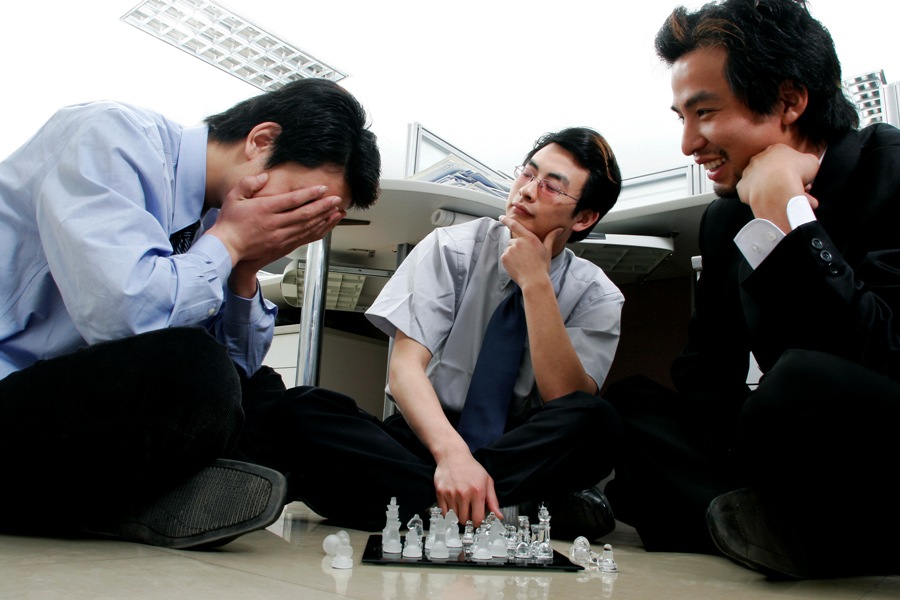








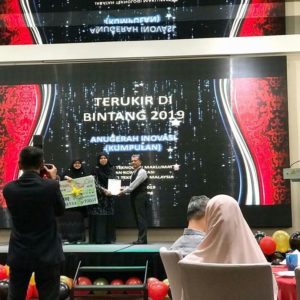

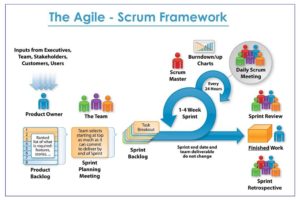
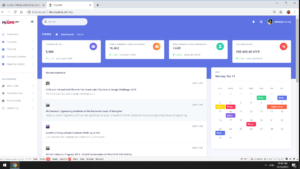
Recent Comments